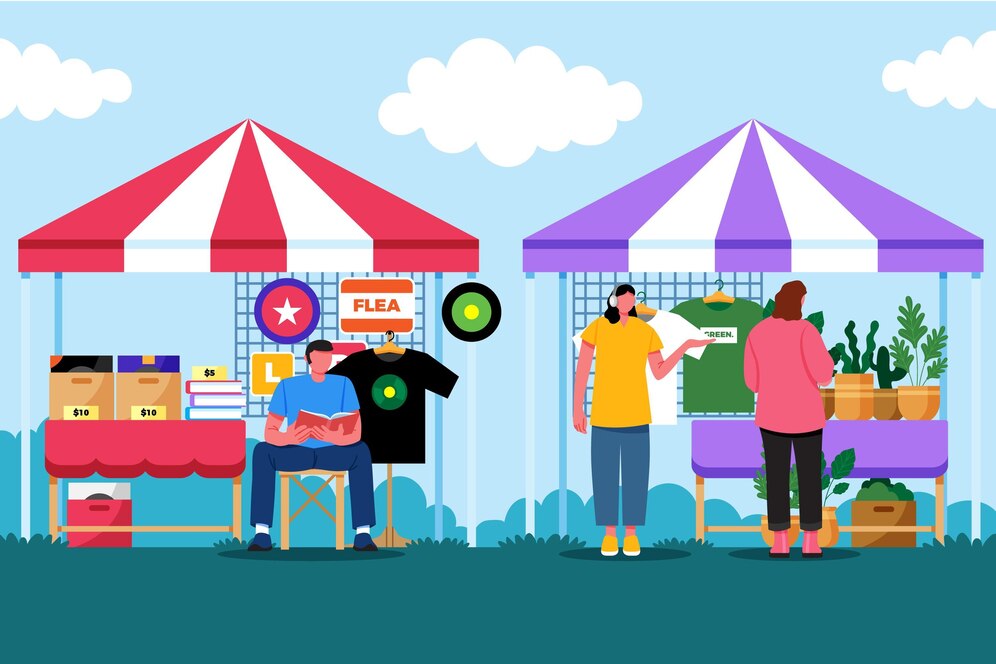Things that sell well at flea markets fall into two categories. Things people need, such as clothing, shoes, personal care items, household items, etc. Things people want, such as antiques, toys, and collectibles. There are all kinds of sellers. Junkers sell anything in any condition. They usually clean out houses or know people who do. The second type of seller buys a lot of “out of box”, slightly damaged, store returns, and excess stock to sell. The third type of seller has a specialty that they stick to, such as jewelry, collectible toys, glassware, video games, etc. Buyers pay a higher price because the seller knows the market value and the items are well-cared for, clean, and in good condition. Another type of seller is someone who is downsizing their home or cleaning out their closets. The best sellers have a variety of quality, clean items. Avoid dirty, worn items. Crumpled, dusty, broken items that cannot be cleaned or repaired are put in the trash. Find your niche. Make it clean, present it well, price it fairly, and almost anything will sell.
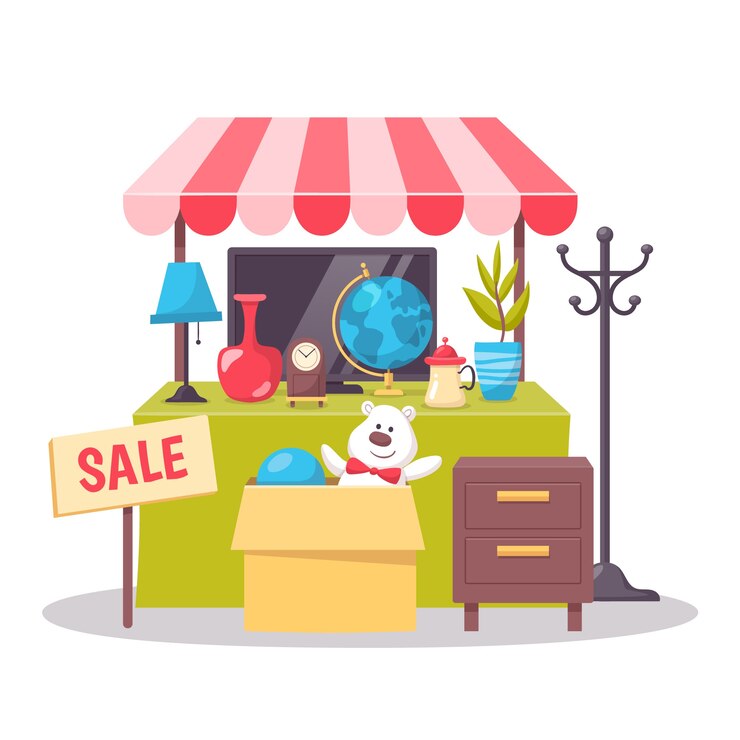
What Sells at Flea Markets
Selling at flea markets can be a profitable venture, especially if you choose the right items. Here is a list of some of the most profitable items to sell:
1. Vintage and Antiques
Furniture: Refurbished or antique items can attract buyers looking for unique items.
Collectibles: Items like coins, stamps, and antique toys can fetch high prices.
Vinyl albums: especially old and obscure albums or foreign albums.
Pre-1990 comic books: especially those in exceptional condition.
Mahjong tiles: Seriously. In some cases, a used mahjong set can cost over $100.
2. Handmade Items
Crafts: Jewelry, candles, soaps, and home decor are popular.
Art: Local artwork or prints can appeal to visitors looking for unique items.
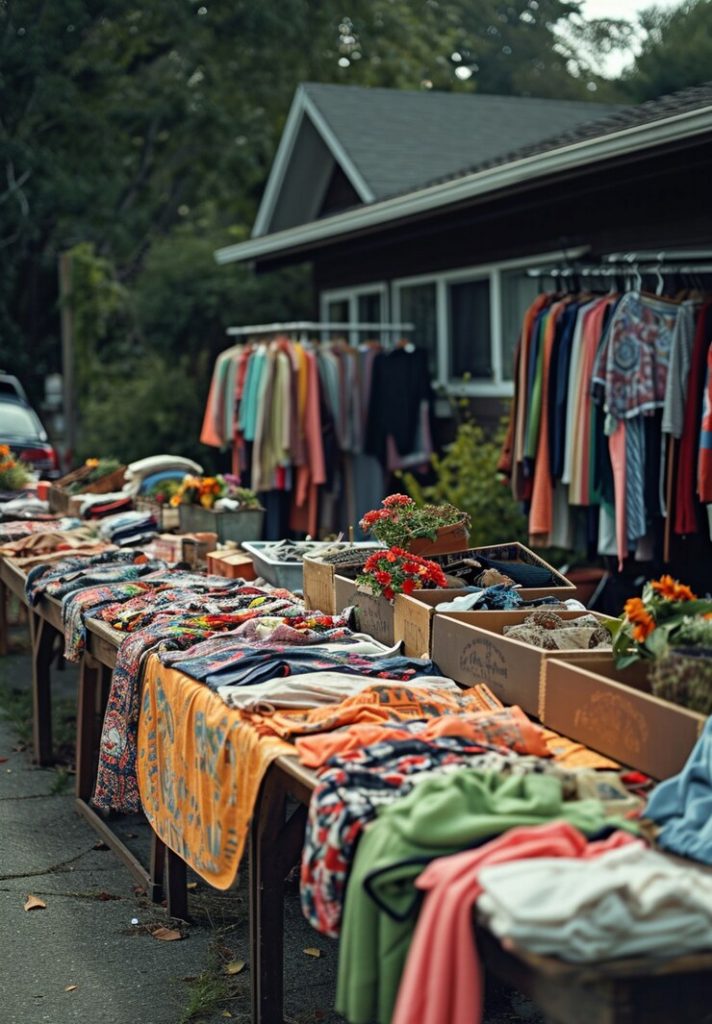
3. Clothing and Accessories
Vintage clothing: Retro styles can be trendy and sell well.
Handmade items: Scarves, bags, and hats can be attractive.
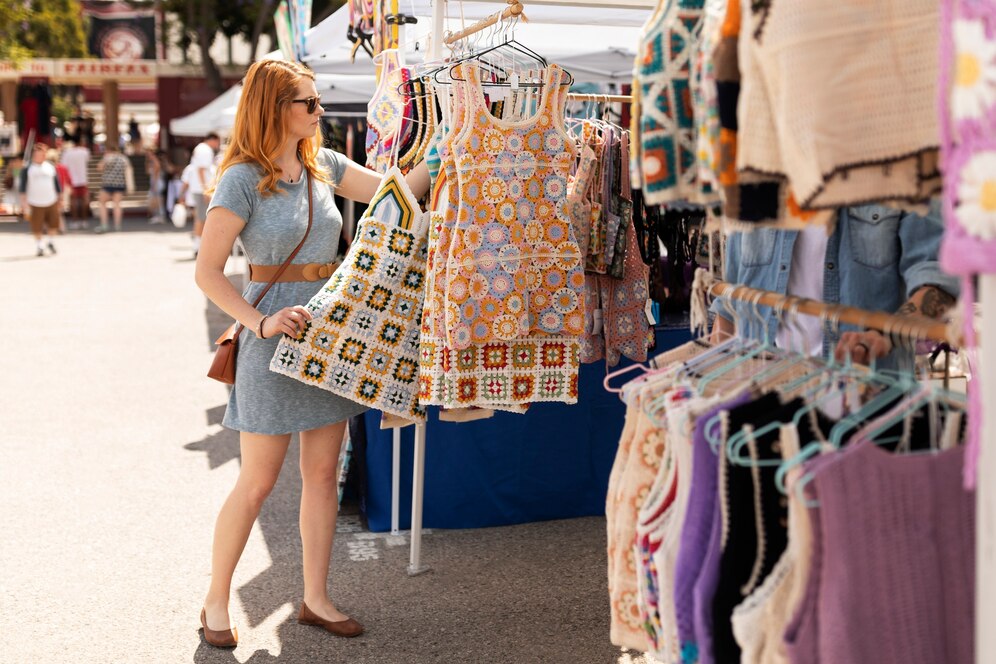
4. Home and Garden Products
Plants and Succulents: Small plants and garden supplies are popular.
Decor: Unique home decor, such as wall art and decorative pillows.
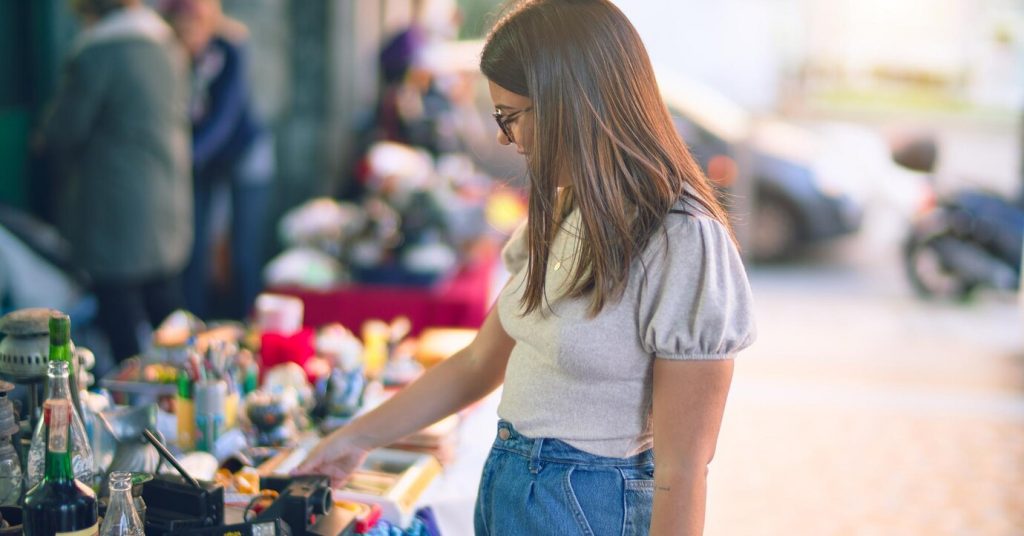
5. Food & Drink
Homemade food: Baked goods, jams, and sauces can attract foodies.
Local produce: Fresh fruits and vegetables can be a big draw.
6. Tools & Hardware
Used tools: Hand tools, power tools, and garden equipment can be in demand.
DIY supplies: Used items for home improvement projects often sell well.
Pet Houses: Honestly. Dog and cat houses are very expensive to buy new, so you can make a tidy profit by buying one cheaply, cleaning it up, and reselling it.
Equipment: These are basically cash. If you can buy in bulk, you can sell them for a profit.
7. Electronics & Gadgets
Used electronics: Phones, tablets, and accessories can attract tech-savvy buyers.
Vintage electronics: Old radios, cameras, and gaming consoles can be collectible.
Car Parts: Car parts are sold.
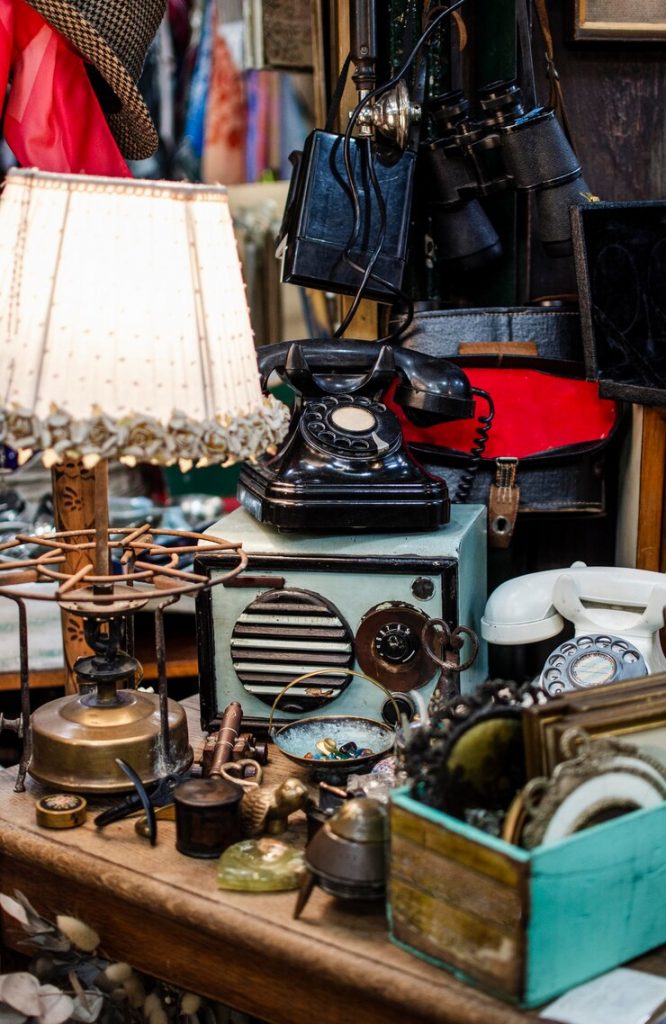
8. Children’s goods
Toys: Gently used toys, especially vintage or classic toys, can sell quickly.
Magic books: books on how to do magic tricks, especially those written by people unfamiliar with the world of psychics and card manipulation, can be resold for a tidy profit.
Clothing: Children’s clothing is always in demand and can be sold in bundles.
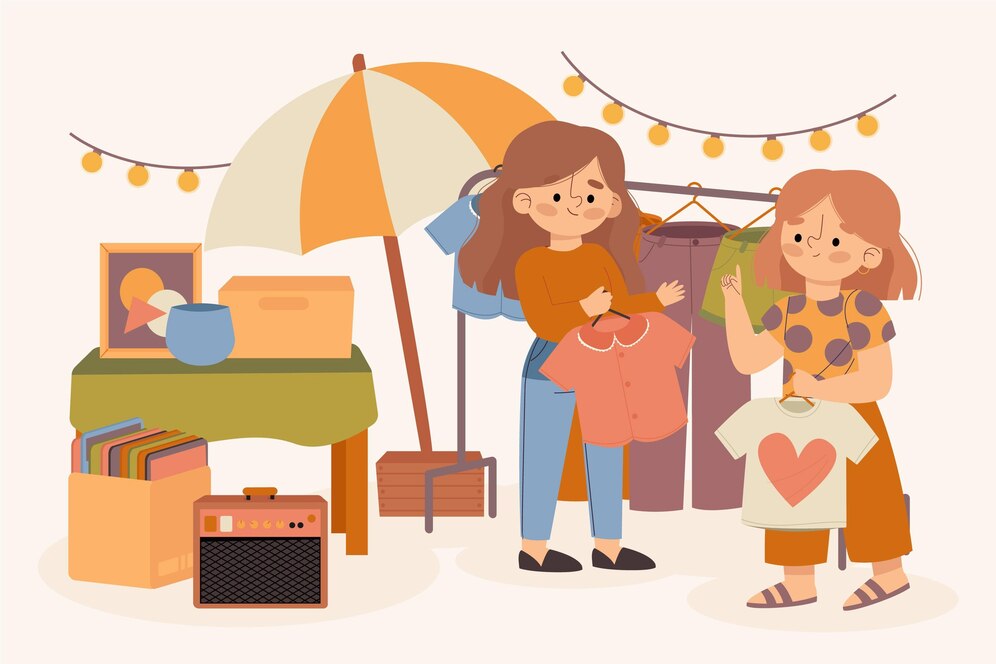
Hottest Selling Items at Flea Markets
Niche or Specialty Products:
Look for unique and specialized items for a specific market. Since there is less competition for a specific product, you can charge higher prices and earn more profit.
Health and Wellness Products:
The health and wellness sector is growing. Consider selling supplements, organic and natural skin care, workout equipment, or specialty foods that address specific nutritional needs.
Home and Kitchen Appliances:
Innovative and efficient home and kitchen appliances, such as smart home devices, eco-friendly gadgets, or high-end cooking equipment, can yield attractive profit margins.
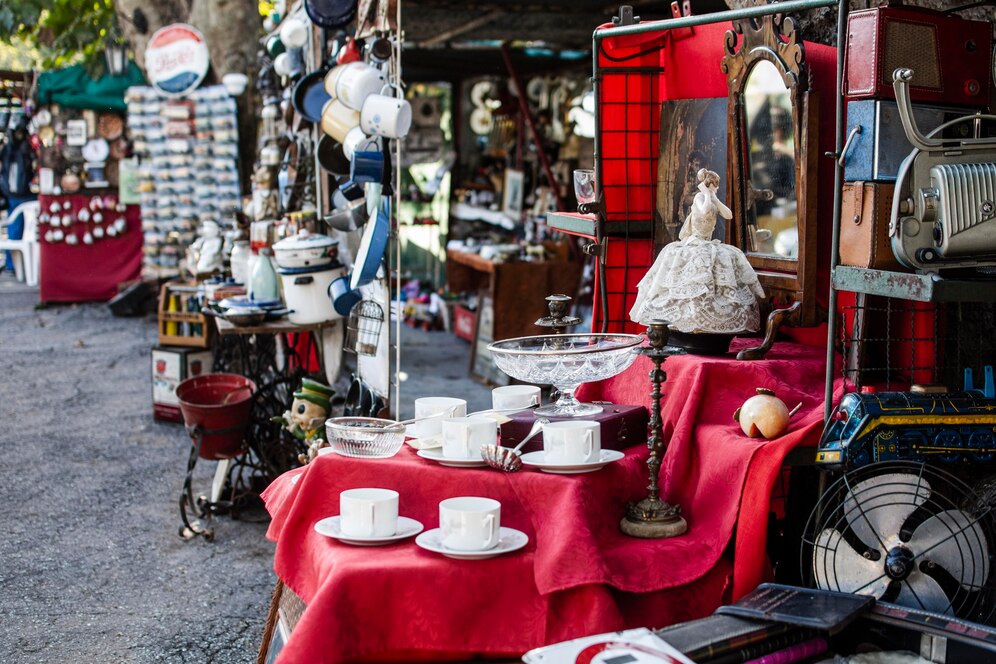
Beauty and Personal Care Items:
Cosmetics, skin care, hair care, and grooming items are examples of beauty and personal care items with great profit potential. Focus on products with innovative formulations, organic or natural ingredients, or special benefits.
Electronics and Gadgets:
Keep an eye out for hot electronics and gadgets, including wireless headphones, smartwatches, portable chargers, and home automation products. These products are often in high demand and can offer substantial profit margins when purchased at competitive prices.
Fashion Accessories:
Accessories like sunglasses, watches, purses, and jewelry can fetch better profit margins than clothing. Look for unique designs, high-quality materials, and well-known names.
Home Decor and Furniture:
Profit margins can be higher for unique and elegant home designs, furnishings, and furnishings. Consider wall art, decorative accessories, eco-friendly furniture, or personalized home decor.
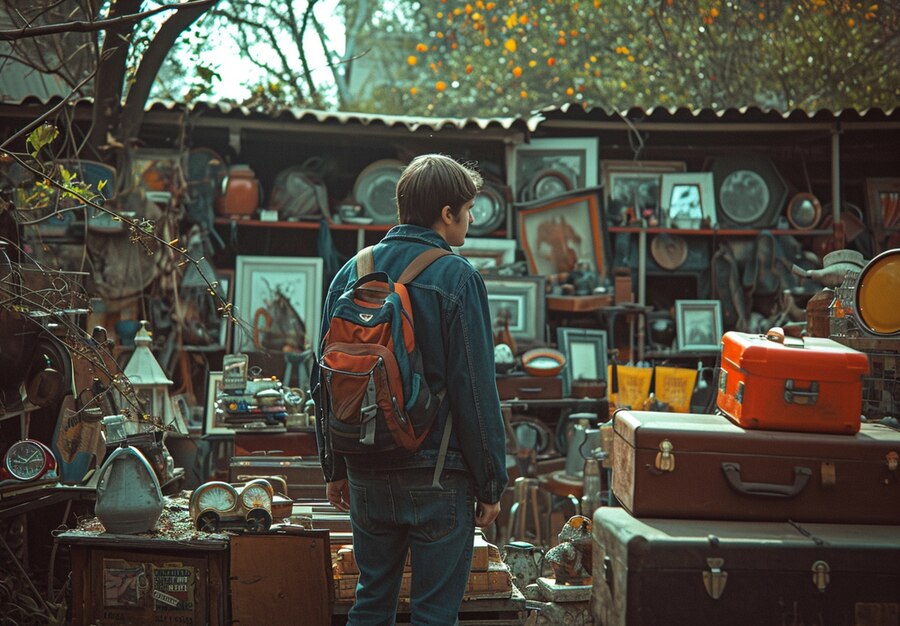
Pet Supplies:
The pet sector is expanding rapidly, and pet owners are often willing to spend money on high-quality products. Consider selling high-quality pet food, fashionable pet accessories, grooming supplies, or cutting-edge pet devices.
Baby Products:
Due to ongoing demand from new parents, baby products like organic baby food, eco-friendly diapers, baby care items, or revolutionary baby equipment can have high profit potential.
Hobby and Specialty Products:
Offer specialty products for hobbies and enthusiasts, such as craft supplies, specialist tools, one-of-a-kind ornaments, or hobby-related products.
How do I make money at a flea market?
- Try to book in the same place. You never know how many customers are looking for your products and might get lost.
- Don’t under price your products, especially if other vendors are selling similar products. It’s hard to win a price war that’s out of your reach. Instead, give a small gift for each purchase…small toys, etc.
- Be friendly but try not to engage every person who comes to your booth
- Stay as far away as possible to give your potential customers a chance to browse your products
- Don’t get discouraged every time a potential customer leaves your booth. They may come back later and even recommend you to their friends
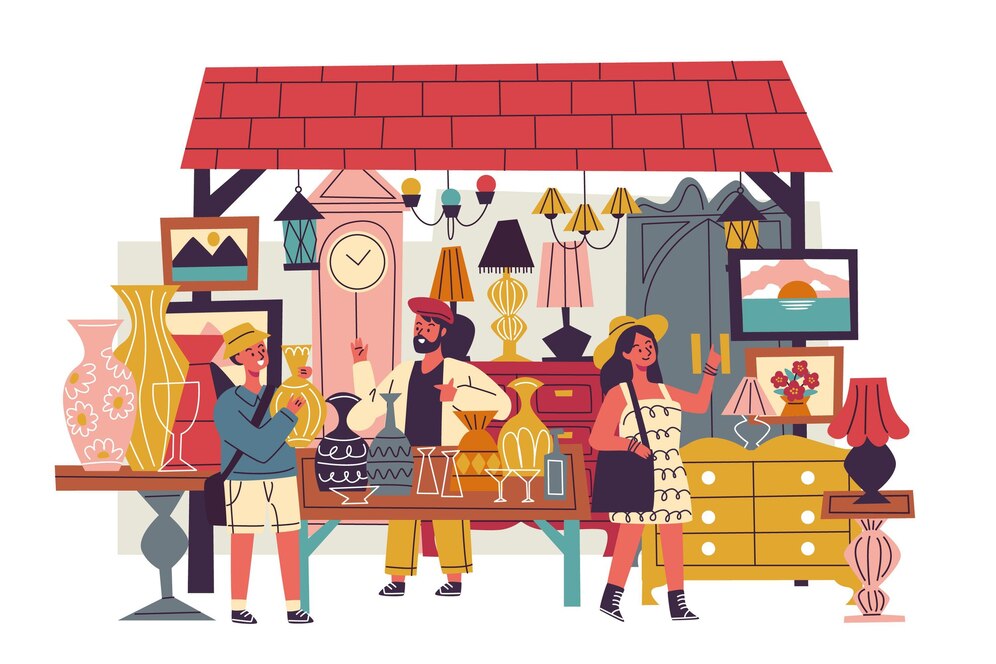
How do you price items at a flea market?
The price should be high enough that people realize it’s not total junk, but rather less than the typical price on other second-hand sales sites.
For example, if you want to sell Xbox 360 with games and accessories for the next sale. You should check sites like Facebook Marketplace, kajiji, and eBay and see what kind of average price they’re charging. Then you will probably ask about 75% of that price — people like to haggle so you will take something over 40% of the online price.
People like to haggle, and they know that warranties are rarely available from flea markets (or garage sales). So for anything that needs to work, you need to set a price that they’re willing to take a chance on buying, or you need to be able to prove that it works. If the price is too high and you can’t prove it works, they won’t buy because if they get it home and it’s a stupid thing, they’re out of that amount.
How do you start a new flea market from scratch?
First, obviously, you need to find a venue, search flea market booth rental near me on google to find best place. Second, you need to set it up. Most of the tables here are set up. They are standard 2′ x 8′ folding tables. If you choose the right facility, you can use their tables. A VFW hall or a KC hall will have these and plenty of folding chairs. You will also need signage.
Now, you want to do it on a weekend when there are no other big events in your area. That’s why summer is a bit of a dead end. Homecoming celebrations in town, firefighters’ picnics, city parades, and all that just kills business. They just work. A visit to the local chamber of commerce can tell you. Another one in the local newspaper can be a good way to get some free publicity and some information.
Send out a press release during the week of the market. News channels do human interest stories and they can only cover so many water skiing squirrels. Don’t miss the local news either. Church bulletins, weekly newspapers, truck stop freebies, and shopper newsletters – they’re all good. Radio ads can be cheap or expensive. Check prices and find a deal. Go to the grocery store billboards. Wallpaper the city with ads, then be sure to remove everything.
Get some help. Probably not your best friend, because you’ll likely hate each other by the end of it.
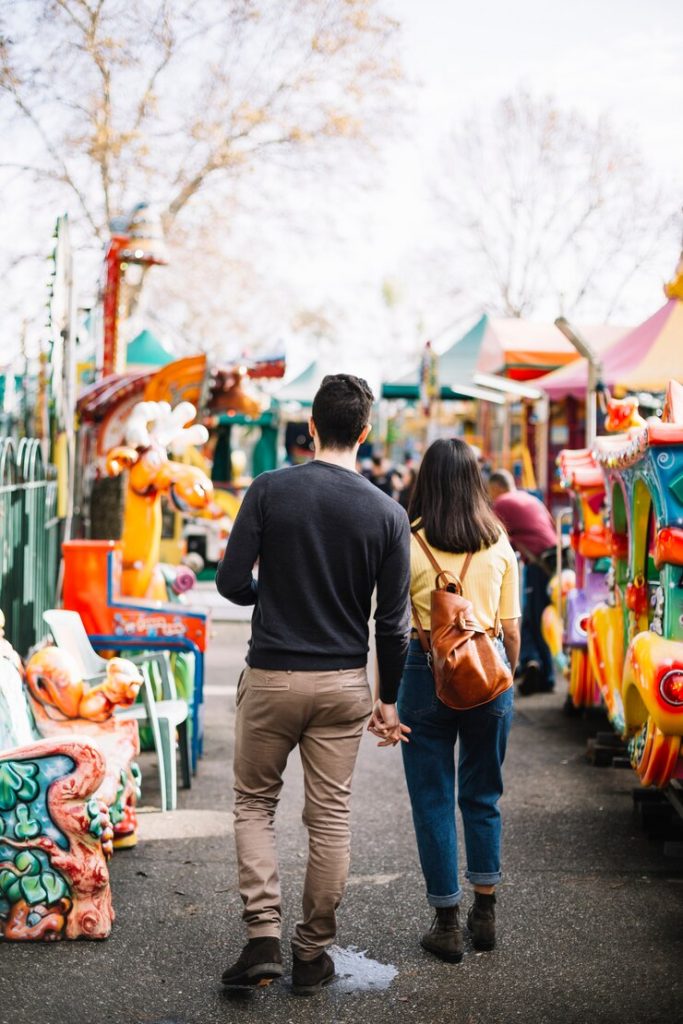
Becomg a Vendor at a Flea Market
There are several important strategies and considerations to consider when selling at flea markets:
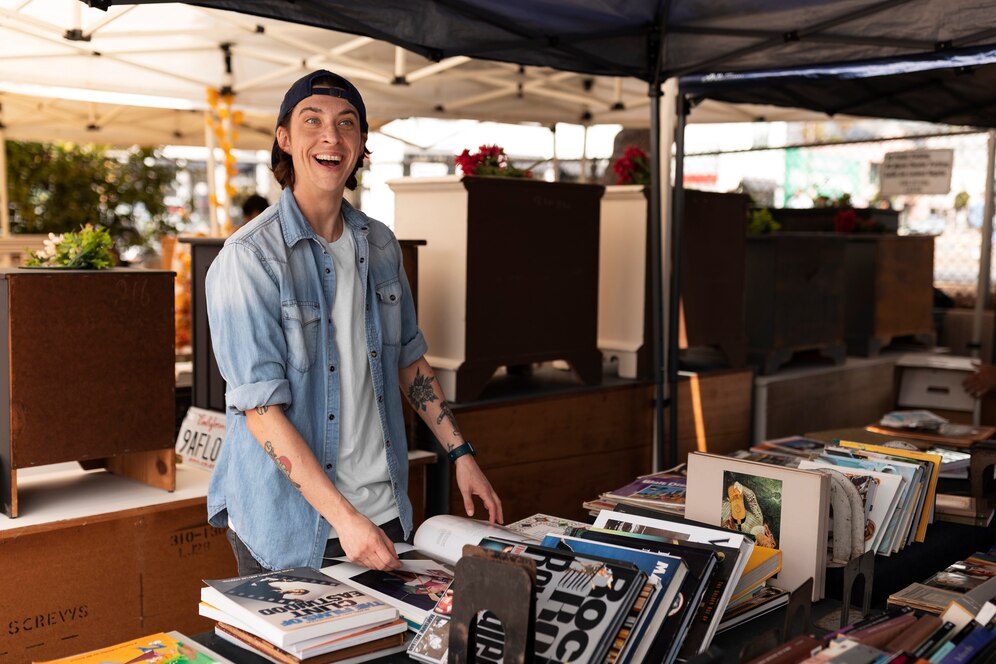
Choosing the Right Products
Market Research: Sellers need to understand what items are in demand at their local flea market. Popular categories include vintage clothing, antiques, handmade crafts, home decor, and collectibles.
Sourcing Inventory: Successful sellers often find products at thrift stores, garage sales, auctions, and even by making their own handmade items.
Setting Up a Booth
Presentation: A well-organized and visually appealing booth can attract more customers. This includes attractive displays, proper signage, and clear pricing.
Location: Location within the market can affect sales. Sellers often target high-traffic areas.
Pricing Strategies
Competitive Pricing: Understanding the market value and pricing products competitively is crucial. Vendors may need to adjust prices based on demand and competition.
Negotiation: Many flea market shoppers expect to haggle, so being open to negotiation can help close the sale.
Building Customer Relationships
Relationship: Friendly interactions can create a positive shopping experience, which encourages repeat customers.
Loyalty Programs: Some vendors offer discounts or loyalty incentives for returning customers.
Marketing and Promotion
Social Media: Many vendors use platforms like Instagram or Facebook to promote their booths and attract customers.
Community Involvement: Participating in local events or collaborating with other vendors can help increase visibility.
Financial Management
Cost Analysis: Keeping track of expenses (booth fees, inventory costs, transportation) and sales helps understand profitability.
Diversification: Some sellers may expand their presence by participating in multiple flea markets or even selling online.
Legal Considerations
Permits and Licenses: Depending on the location, sellers may need specific permits or licenses to operate legally.
Sales Tax: Understanding local sales tax regulations is essential for compliance.
How do people make a living from selling in flea markets?
- Research: Before selling, research the current market value of your item so you get a fair price.
- Condition: Items in good condition usually sell for more, so clean and present them well before selling.
- Negotiation: Be prepared to negotiate and know the minimum amount you are willing to accept.
How are the prices of antique items at a flea market determined?
The price of antiques at a flea market is typically determined by a combination of factors, including the condition of the item, rarity, demand, provenance, and negotiations between the buyer and seller. Here are some important considerations that can affect the price of antiques:
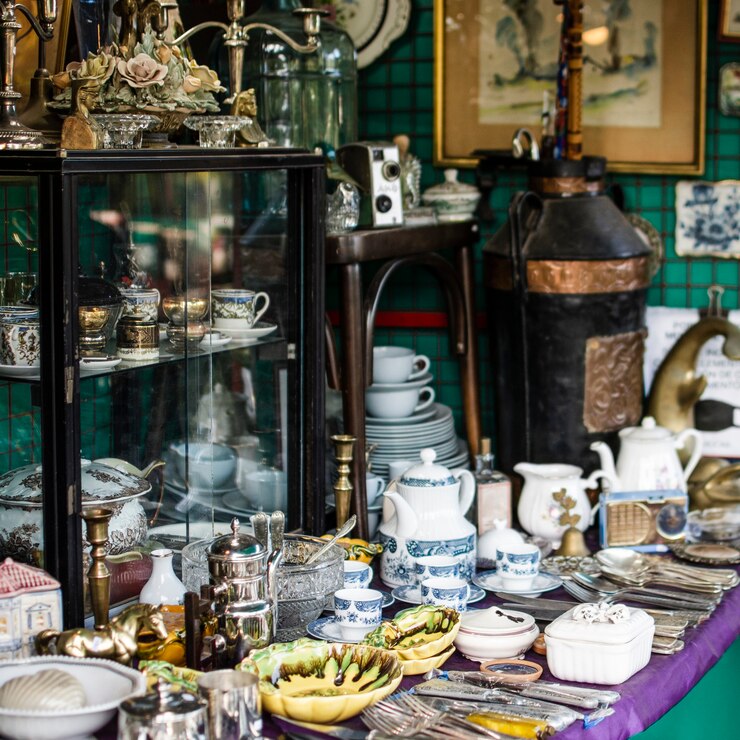
Condition: The condition of an antique plays a significant role in its value. Items in excellent condition, with minimal damage or wear, are generally more desirable and can fetch a higher price. Conversely, items in poor condition may be worth less, although some collectors may still be interested in restoration projects.
Rarity and desirability: The rarity and desirability of an antique can significantly affect its price. Items that are in short supply or that have unique features, craftsmanship, or historical significance are more sought after by collectors, which can increase their value.
Demand and trends: Market demand and trends can affect the price of antiques. Popular styles or time periods may experience high demand, which can lead to higher prices. Conversely, if certain types of items fall out of favor or are less sought after, their prices may decrease.
Origin and Authenticity: The provenance of an item, including its documented history, ownership, and authenticity, can affect its value. Items with a well-documented history or connections to famous people or important events may have higher values due to their historical significance.
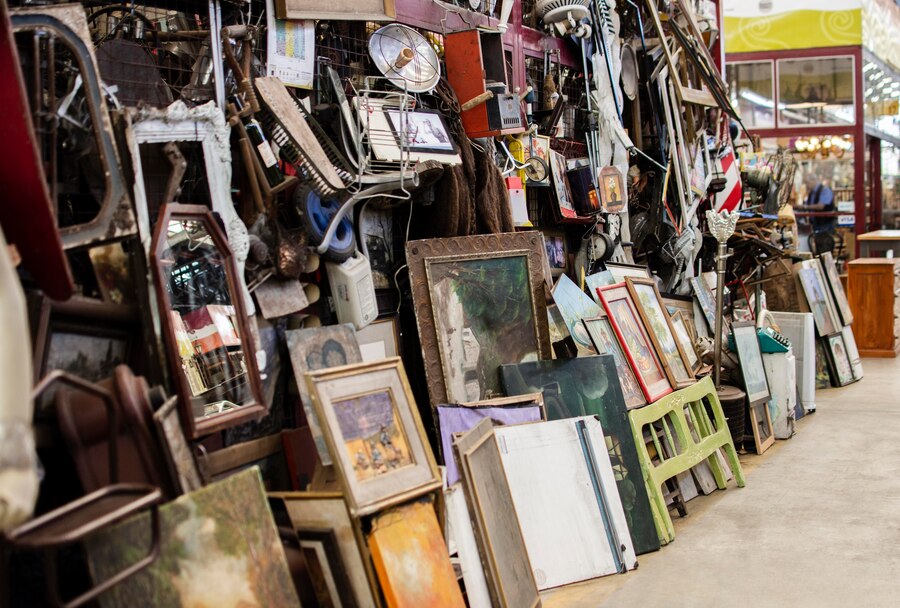
Seller Pricing Strategy: The pricing set by the seller is also a factor. Sellers consider their costs, desired profit margins, knowledge of the market, and their own assessment of the value of the item when setting prices. Some sellers may initially price the item high to allow for negotiation, while others may offer a more specific price.
Negotiation: Flea markets often involve negotiation between buyers and sellers. Prices may be open to negotiation, allowing buyers to negotiate a lower price based on the value of the item, its condition, or their own budget.
It is important to remember that pricing at flea markets can vary widely and there is often room for negotiation. It is advisable to research and educate yourself about the specific items you are interested in, their market value, and comparative prices before going to a flea market. This can help you make informed decisions and negotiate prices effectively.
The best way to see this is to visit a few flea markets and see what’s being sold there. I’m sure you’ll see a lot of clothing, especially t-shirts. Then, you’ll see a bunch of stuff that’s been bought, cleaned, and sorted from garage sales. You can just walk around and get a good idea of what’s selling, what’s not selling, and what seems to be fashionable.
